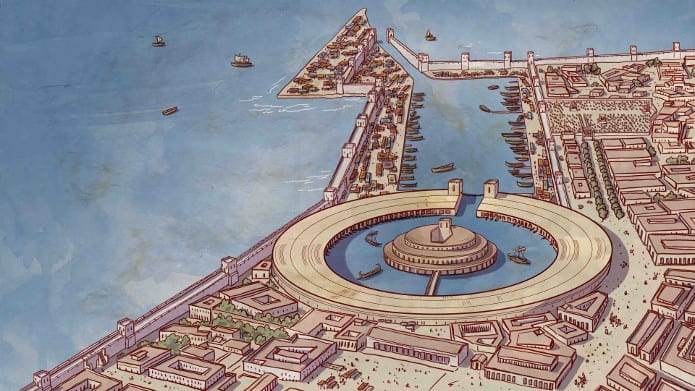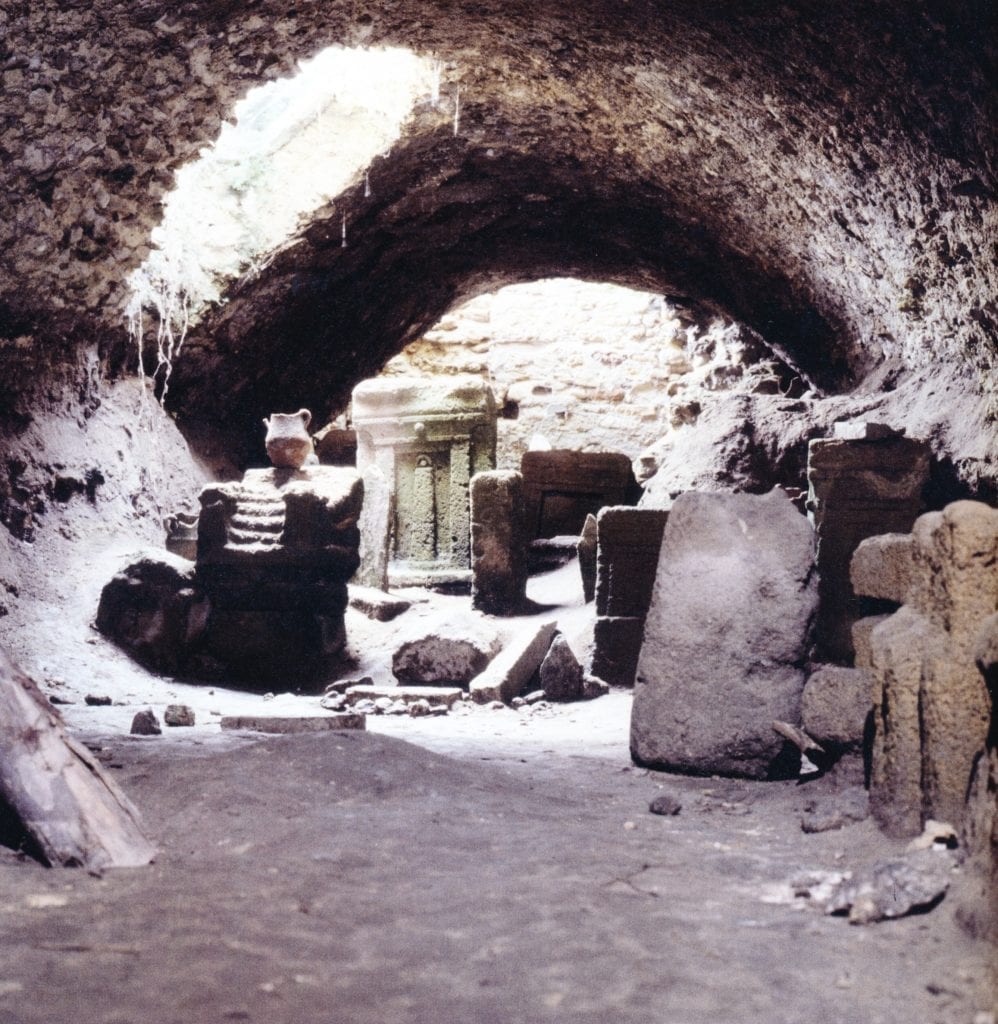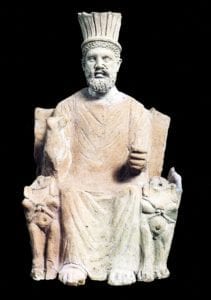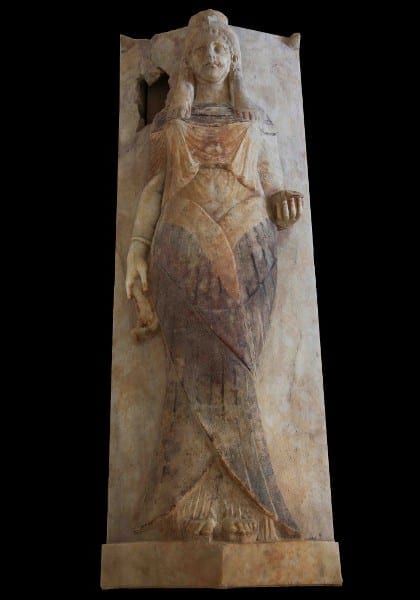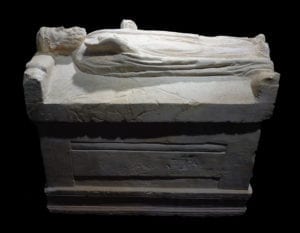Carthage in-depth
carthage in-depth
Carthage – In-depth
Elyssa-Dido
According to the myth, Princess Elyssa- Dido escaped from the Phoenician city of Tirus after the death of her husband Acherbas, murdered by her brother Pygmalion who wanted to take over all his possessions. After long perenigrations and a stop in Cyprus, Dido arrived on Tunisian shores with several fellows. There she found a hill dominating a wide bay; a suitable place to found a city. Dido and her companions were received by the inhabitants led by their king Iarbas which refused to accept them on their territory. Then Elissa convinced Iarbas to give her as much land as could be encompassed by an oxhide. Dido cut the oxhide into fine strips so that she had enough to encircle an entire nearby hill, big enough to establish a city. From this legend comes the so called “Dido’s Problem”, a isoperimetric problem: these are problems about enclosing areas with the same length of perimeter, or enclosing volumes by surfaces of the same area.
Beyond the legend of the foundation of Carthage, we assist at the complex phenomenon of movement of peoples who during the IX and VIII centuries passed from the Levantine shores to the shores of Mediterranean for commercial purposes, research of new resources, strategies of demographic distribution and population (a phenomenon improperly defined as “Phoenicia colonization”).
etruscans
In one of the tombs of the Necropolis of Saint Monique in Carthage a “tessera hospitalis” was found. This “tessera hospitalis” documents in a direct way the personal relations of exchange and hospitality between Etruscans and Carthaginians in the last decades of VI century b.C., during the period of strong alliance of these two populations against the Phocaeans. This object made of ivory has an engraved side with the figure of a wild boar and on the other side an Etruscan inscription with an onomastic formula mentioning a Punic person from Carthage: mi Puniel Karthazies. The object can be considered as an identification document with which its owner would be able to get recognised in a foreign context, especially in an Etruscan one.
The Harbours
The most ancient harbours of the city have not yet been identified; however, the Anglo-American excavation works organised in the frame of UNESCO project have brought to light the remains belonging to the late Punic era (III-II century b.C.) located in the two coastal lagoons linked to each other through a canal, easily recognizable in the urban landscape. It is a rectangular basin excavated artificially, with a mercantile port and a second military port with a circular plan and a islet in the middle. The islet was equipped with shipyards for hauling battleships and surrounded by several docks arranged in a fan shape able to recover up to 180 ships.
The Tophet
The Tophet was the Phoenician outdoor place dedicated to the worship of the god Baal Hammon. In this area took place special ceremonies and It was possible to see small sacella, altars and stelae. The Tophet of Carthage since the V century b.C. was dedicated to the goddess Tinnit, protector of the city. Following the Romanisation of the city, the goddess was identified with (Iuno) Caelestis. The area was characterised by the presence of ceramic urns containing ashes of cremated humans, usually new-borns or children, young animals or a combination of animal and humans remains. It is uncertain whether these burials represent immolations realised on purpose or young human beings died of natural causes and then offered to the gods. Even if the archaeological documentation doesn’t offer key elements about this, actually the Greek and Latin tradition ascribes to Phoenicians and Carthaginians the practice of human sacrifice and the interpretation of the Tophet as sacrificial sanctuary is considered preferable by the most important academicians.
The Necropolis
The cremation burials placed in small cavities dug in the soil, represent the most ancient remains of the necropolis. During VII and Vı century b.C for the majority of the tombs is constituted by wood coffins placed in with individual graves; some of the most elaborated tombs are basin-shaped and sometimes covered with monolithic slabs; the finest ones, belonging to the upper classes, are room-shaped made of blocks and accessible by a deep well. The funeral dowry is mainly composed by pottery with masks, figurines and jewellery. From V century b.B. it is possible to see also multiple rooms (particularly in Rab Necropolis in Sainte Monique), where we can find marble sarcophagus with the shape of the departed owner sculpted on the cover. From the end of IV. century b.C. the incineration practice prevailed over the other ones, probably under the influence of the Greek culture.
Square of Corporations
The Square of Corporations situated in Ostia behind the theatre, was a wide rectangular area surrounded by several rooms hosting the offices of the delegations of different cities which had commercial relationships with Ostia. It was a place of meeting where different communities from North-Africa and Tunisi had stores and warhaouses belonging to the shipping companies of the most important Mediterranean cities and African provinces: among them the african naviculari and the communities of Alexandria, Sabratha, Carthage. Thanks to its strategical geographical position, in the ancient times Ostia was a place of import and export of goods carried by ships coming from different African provinces.
Carthage in-depth
Map
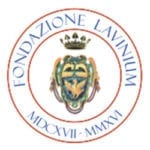



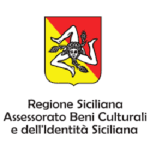






















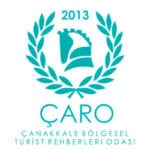
Previous
Next


